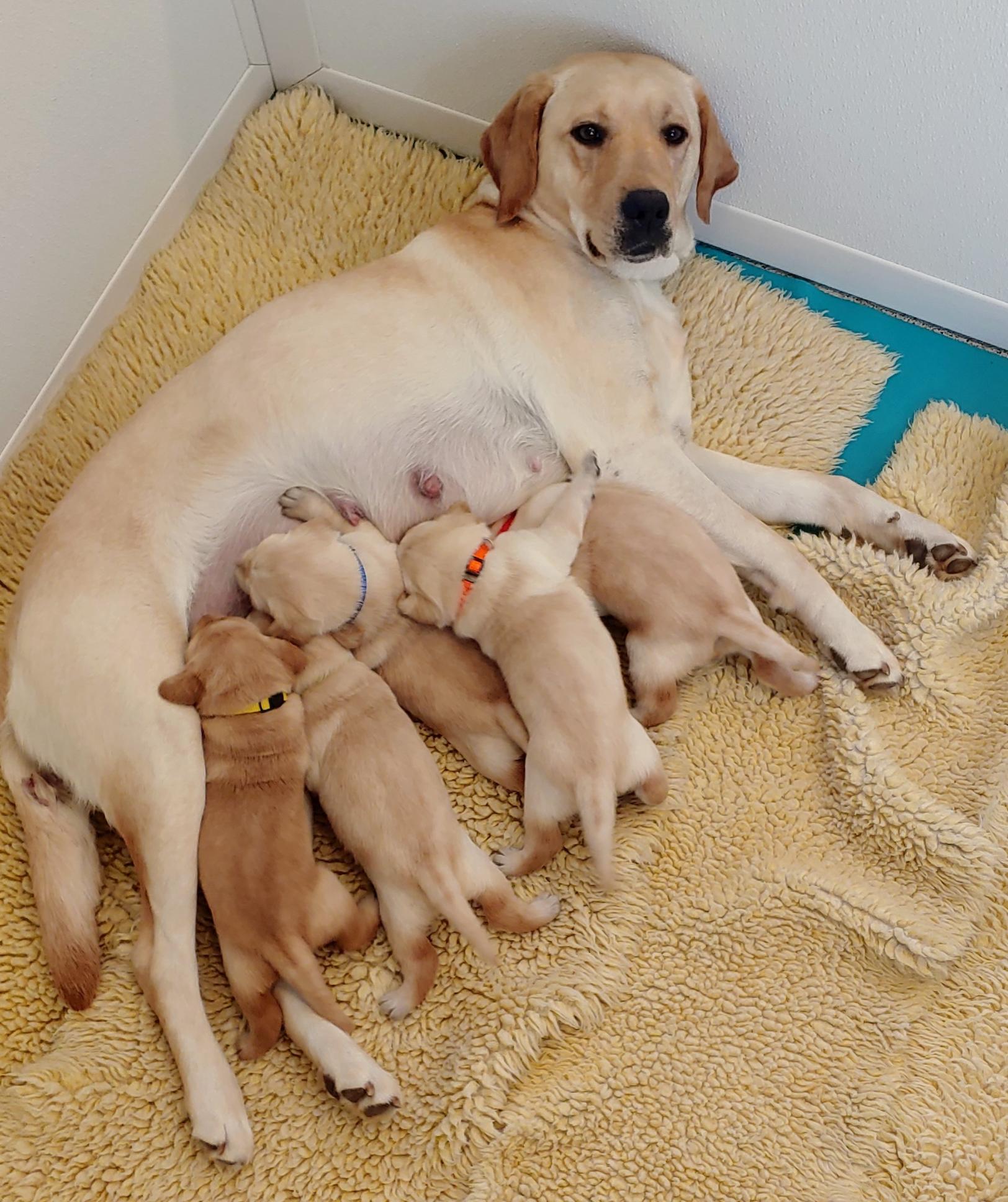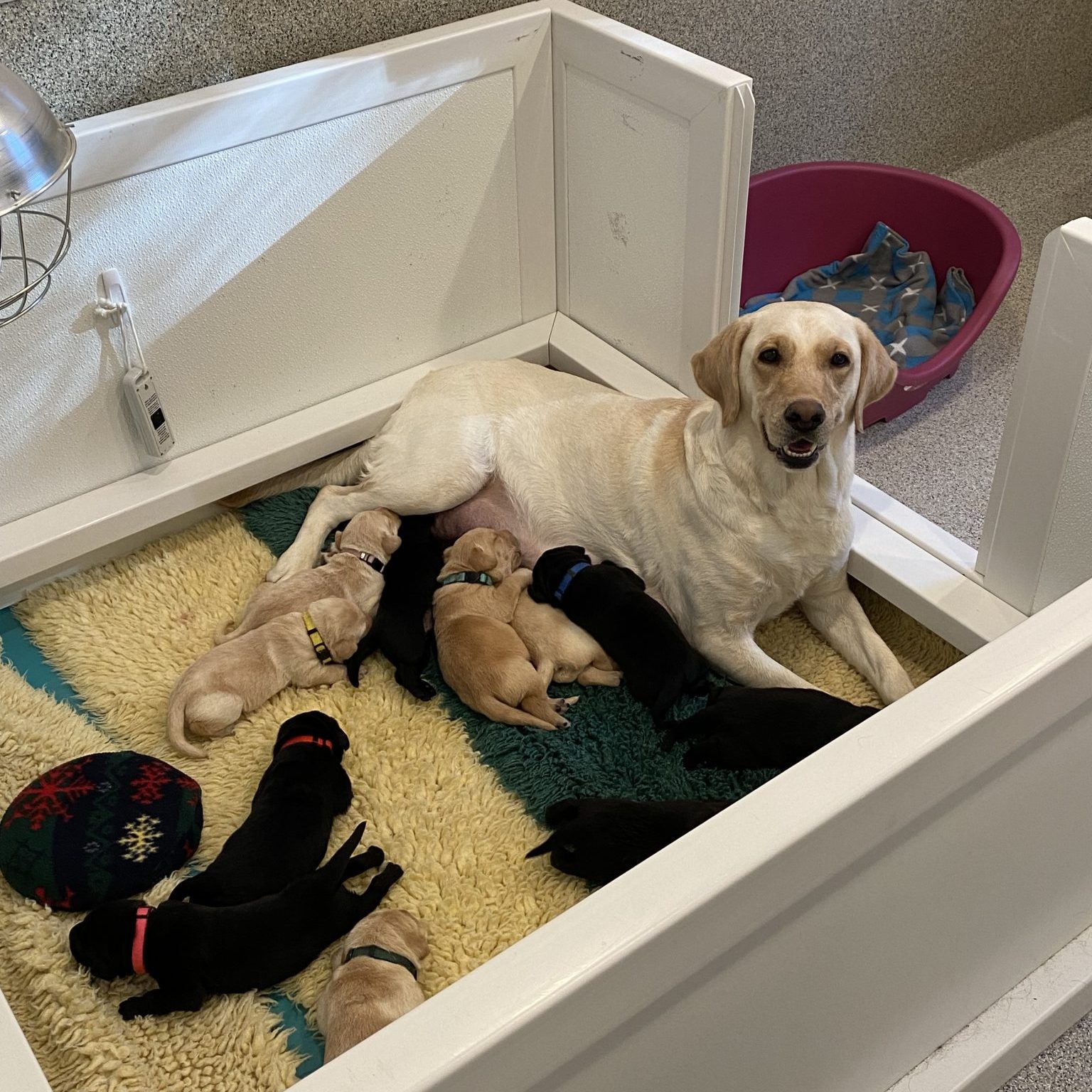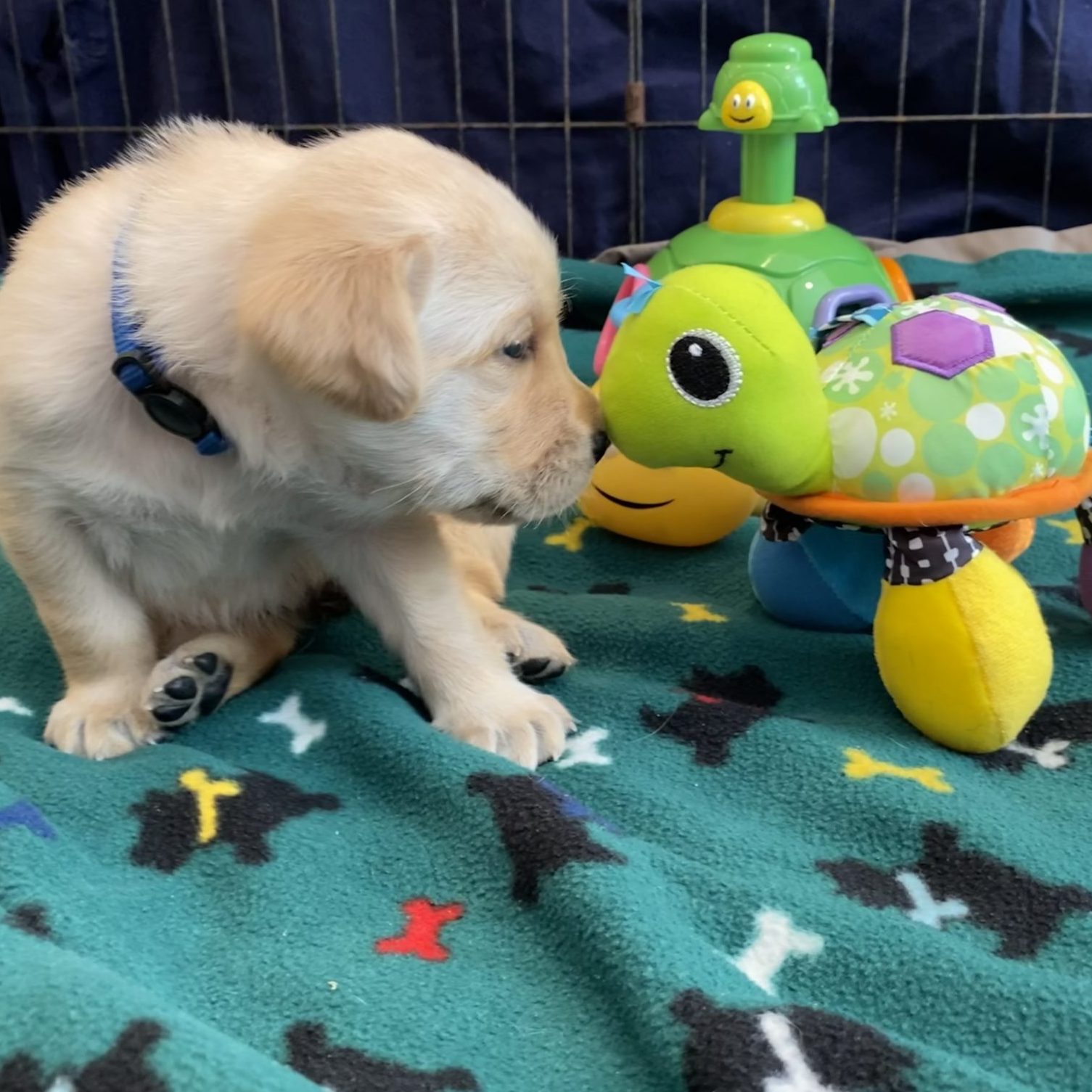What Does a World Class Service Dog Cost? Part One: Birth to 8 Weeks
June 16, 2022
Birth to 8 Weeks
We often mention that NEADS invests an average of $45,000 and two years in each Service or Assistance Dog placed with a client. What goes into that investment?
This is Part One of a series that will investigate the details of NEADS’ investment. Future articles will take us right through to placement with a client and the working life of the dog.
We’re going to start with the earliest stage of a NEADS puppy’s development, from birth through eight weeks, which entails about $8,000 for each pup.
Pre-Birth & Pregnancy
 First, we need a puppy. Thanks to our expanding breeding program, most of our puppies are now bred and born right here on campus. Whether we breed or acquire a puppy from a partner, the investment begins!
First, we need a puppy. Thanks to our expanding breeding program, most of our puppies are now bred and born right here on campus. Whether we breed or acquire a puppy from a partner, the investment begins!
A NEADS-bred dog is carefully planned for long before he or she is born, beginning with choosing the best of the best of our females to enter the breeding colony. These dogs, termed broods, undergo extensive, and expensive, medical and genetic testing to ensure their suitability for breeding. Broods live with volunteer caretakers when not pregnant and will be bred no more than four times before retiring to live the lives of cherished pets with their caretakers.
When a brood goes into heat, she is closely monitored and progesterone tested to pinpoint the best time to breed her. Breeding might be done the old-fashioned way with a NEADS stud or a dog from another organization. It might also involve artificial insemination with semen shipped from one of our cooperative partners from across the United States and Europe (NEADS also freezes and ships semen to our partners as we all seek to build the strongest genetic stock for our Service Dogs). We take great pains not only to ensure genetic diversity by using studs from other organizations, but also to improve our breeding results (see related article).
Now we’ve got a pregnant brood, confirmed with an X-ray. She’ll be cared for and monitored by the Breeding Center staff until she is ready to welp (give birth), receiving full time care for a week or so prior to welping (dogs don’t time their deliveries any more reliably than humans do!).
The Litter is Born
It is always a thrill to welcome a litter—and it’s a lot of hard work, too. The Breeding Center staff can handle most births without veterinary assistance, but sometimes a C-section is required. When the puppies arrive, the new little family will receive round-the-clock care. For the next seven to eight weeks, the mother and pups will remain in the nursery.
The Breeding Center nursery wing is kept under quarantine, with only nursery staff permitted to enter, wearing sterile scrubs. Our youngest pups have immature immune systems, and we want to ensure that they are entirely isolated from other dogs and any potential contagion.
Early Development & Socialization
As the pups develop, they will receive immunizations, be microchipped and dewormed, and may require further veterinary care. While they are nursing for the first several weeks, the broods will require a great deal of food—a nursing mother can go through three 30-pound bags of specialty food in 5 or 6 weeks. As the puppies prepare to wean, they will start solid food at four weeks.
Now we’ve got an adorable bunch of pups beginning to investigate their surroundings—it’s time for socialization to begin! You might be surprised by the number of toddler toys in the nursery area. The same things that stimulate tiny people intrigue tiny dogs, too. From as early as possible, nursery attendants expose puppies to new experiences, sights, and sounds, a key foundation for the calm, unruffled temperament a Service Dog or Assistance Dog must have.
Before they leave the nursery, each pup undergoes purpose Behavioral Check List testing. This is a key moment. As the pups play, staff records and evaluates their reactions according to a validated test which helps us determine whether their temperament and strengths are a fit for NEADS Service Dog training or one of our partner organizations’ programs, or perhaps are even better suited for the life of a beloved pet.
And now, our puppies are ready to move on! They’re weaned, immunized, exploring the world around them, and poised to enter the NEADS training program.
Cast a look back at all that goes into these first two months of a puppy’s life. Sometimes, we acquire a puppy from a partner organization such as Guiding Eyes for the Blind. This generally costs around $3,000. That dog will arrive on campus at about eight weeks old. For a NEADS dog, we’ve already spent about $2,000 on the testing for the mother before the pups are even conceived. Once they are conceived, there will be medical testing, and use of the equipment to do this all-important testing; veterinary care; immunizations; food; and a great deal of equipment and supplies necessary for the care of the mother and pups. A major cost, of course, is the intensive staff care by our experienced Breeding Center staff. These dedicated professionals invest enormous time and energy in caring for each one of our precious dogs. On average, by the time a puppy leaves the nursery, we’ve invested about $8,000.
In Part 2 of this series, we will continue take a closer look at the investment NEADS makes in each and every one of our World Class Service Dogs and Assistance Dogs.





